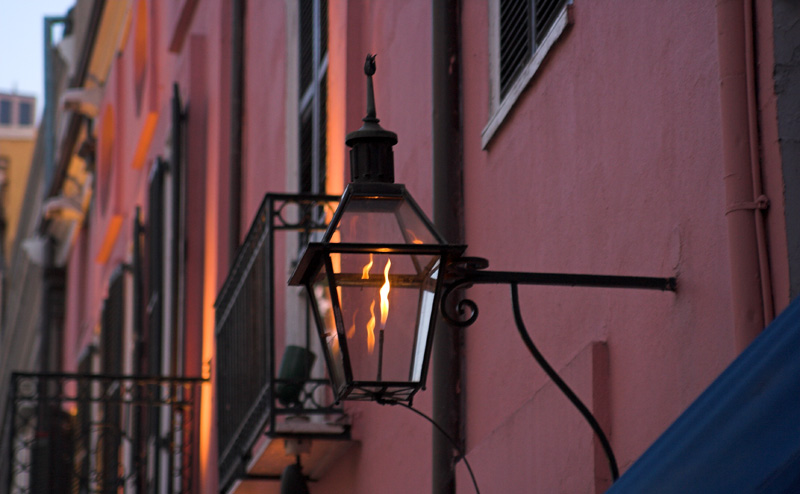French Quarter

The French Quarter, known locally as “The Quarter’ is the oldest and most famous neighborhoods in New Orleans. When the city was founded in 1718, it was centered around the French Quarter, or the Vieux Carré (“Old Square” in French).
Boundaries
The most common definition of the French Quarter includes all the land stretching along the Mississippi River from Canal Street to Esplanade Avenue (12 blocks) and inland to Rampart Street (seven to nine blocks). Some definitions, such as city zoning laws, exclude the properties facing Canal Street, which had already been redeveloped by the time architectural preservation was considered, and the section between Decatur Street and the river, much of which had long served industrial and warehousing functions. Any alteration to structures in the remaining blocks is subject to review by the Vieux Carré Commission, which determines whether the proposal is appropriate for the historic character of the district.
History
Many of the buildings date from before New Orleans became part of the United States, although there are some late 19th century and early 20th century buildings in the area as well. Since the 1920s the historic buildings have been protected by law and cannot be demolished, and any renovations or new construction in the neighborhood must be done according to regulations to match the period historic architectural style.
Despite the name, much of the architecture was built during the Spanish rule over New Orleans rather than the French. A great fire in 1794 destroyed much of the Quarter’s old French colonial architecture, leaving the colony’s new Spanish overlords to rebuild it according to more modern tastes — and strict new fire codes, which mandated that all structures be physically adjacent and close to the curb to create a firewall. The old French peaked roofs were replaced with flat tiled ones, and now-banned wooden siding with fire-resistant stucco, painted in the pastel hues fashionable at the time. As a result, colorful walls and roofs and elaborately decorated ironwork balconies and galleries from both the 18th century and 19th centuries abound. (In southeast Louisiana, a distinction is made between balconies, which do not have roofs over them, and “galleries,” which do.)
Long after the U.S. purchase of Louisiana, descendants of French colonists lived in this part of town, and the French language was often heard there as late as the start of the 20th century.
When the Americans began to move in after the Louisiana Purchase, they mostly built just upriver, across modern day Canal Street. The median of the wide boulevard became a place where the two contentious populations could meet and do business. As such, it became known as the “neutral ground”, and this name persists in the New Orleans area for medians.

Leave a Reply
Want to join the discussion?Feel free to contribute!